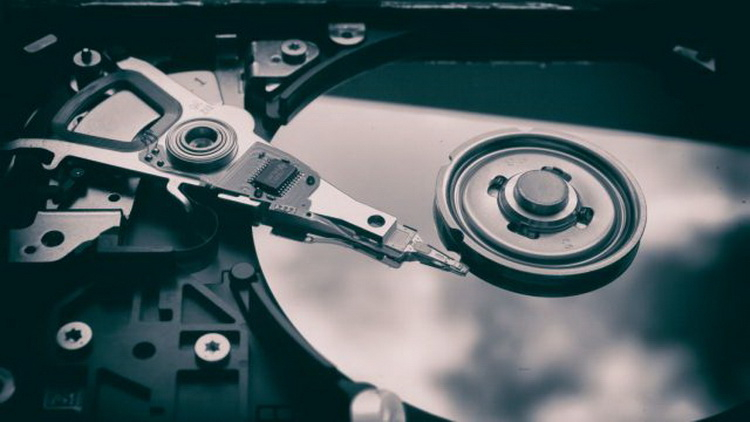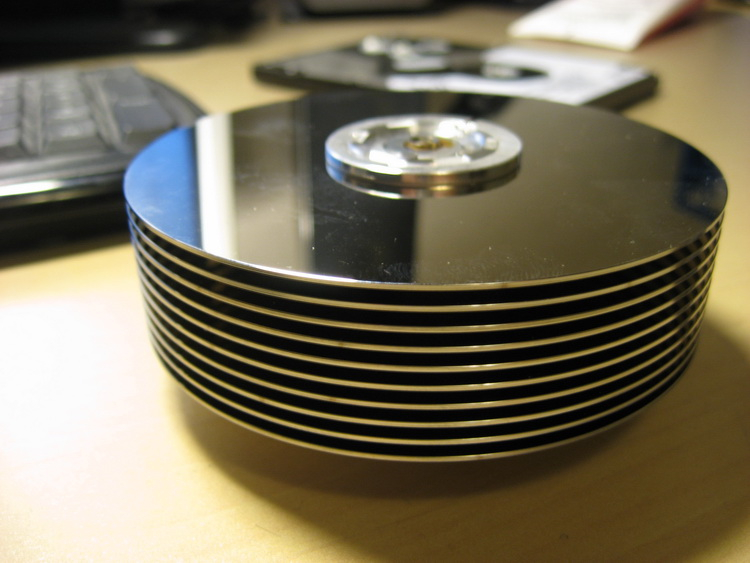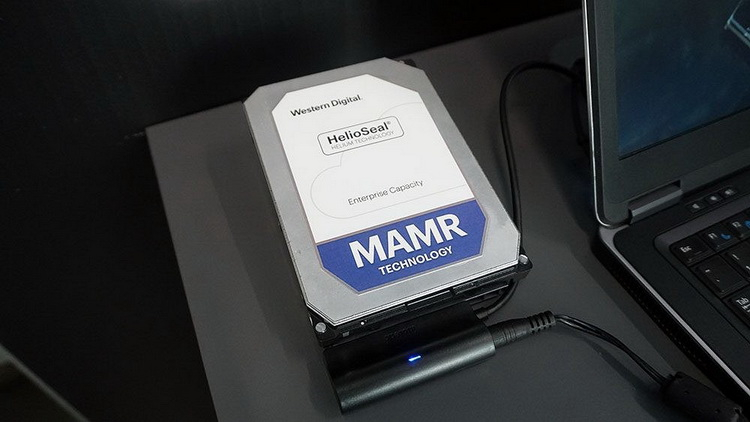The ever-growing need for large storage media is forcing hard drive manufacturers to introduce new magnetic recording technologies every few years. But besides this, there are other methods of increasing the capacity of hard drives. One of these is the use of more magnetic recording plates.

Toshiba was the first manufacturer to market hard drives using nine recordable platters a few years ago. However, according to the resource StorageNewsletter , in the coming years hard drives will appear on the market, in which 10 or more magnetic recording plates will be used. The source learned about this from the Hoya company, which, among other things, is engaged in the production of blanks for HDD plates.
According to the source, by the end of the year, Seagate plans to release the first HDD using Heat-Assisted Recording (HAMR) technology, which in the future will allow the creation of hard drives up to 50 TB. The use of HAMR technology will require Seagate to develop and implement new recording heads for hard drives, as well as switch to glass plates with a special magnetic layer. The first generation of hard drives with HAMR technology will still use nine recording platters. But since glass pancakes will be thinner than traditional aluminum ones, this will allow the creation of magnetic storage media with even more plates.

A recent study by analysts at Trendfocus, a storage market analyst, suggests that adapting HAMR technology will require hard drive manufacturers to switch to platters less than 0.5mm thick. Only in this case it will be possible to produce drives with 10, 11, 12 and even more disks for recording information. At the same time, analysts are confident that 10-platter HDDs will hit the market much earlier than one might expect.
The use of more platters in traditional 3.5-inch hard drives will increase their capacity, even if the evolution of magnetic recording is not going as quickly as we would like. For example, today ten platters with perpendicular magnetic recording (PMR) technology will make it possible to create a 20 TB HDD without HAMR and Tiled Magnetic Recording (SMR) technologies.
It should not be ruled out that hard drive manufacturers may come up with different approaches to maximize their storage capacity. For example, the same Hoya company, which produces glass blanks for HDD platters, said that it is working both towards the development of HAMR disks and towards multilayer solutions. In the past, the manufacturer has already demonstrated prototypes of hard drives with more than ten platters, but now the company is mainly engaged in the production of blanks and its further development direction depends mainly on the HDD manufacturers themselves.

It is important to note that microwave-assisted magnetic recording ( MAMR ) technology, which also allows the creation of high-volume media, does not necessarily require a switch to new glass plates. Therefore, it is not yet known whether MAMR discs will move to thinner plates, as well as designs with more than nine recordings “pancakes”.
Analysts at Trendfocus note continued growth in demand for high-capacity hard drives and increased competition among manufacturers. According to their forecasts, the first 24 TB HDDs will be available for sale in 2022. Whether they will use 10 plates or HAMR or MAMR technologies depends primarily on companies such as Seagate, Toshiba, and Western Digital.
Source 3dnews